6. Fax from Sarajevo

Fax from Sarajevo by Joe Kubert, is ideal for prices festivals: the lived, news!
Unstoppable arguments to spread (and rant) a “comic” finally adult, responsible finally, witness of his time, etc … to the media little interested in ninth planet wishing only events and quickly assimilated symbols, believing detect the original in the conventional (although initially, the opposite should be done).
This award has no value and beyond this (self) annual confirmation, it shows all its artificiality and pretense function (“pretend”, “as before”, “same as”, ” Alph as alphabet “,” Art as Art “, etc …).
Fax Sarajevo had that price (and will be others) because it seems to be part of history and the real (the one in which we believe we live) as Spiegelman Maus. Yes ! Here the simulacrum is based on what previous unsurpassed for long!
Yet the band Kubert is parsecs of this absolute masterpiece. Spiegelman was the actor of his comics. He clung to understand how his family had gone through the Holocaust, to try to understand living and living with his family.
Joe Kubert hand, is only an indirect indicator. From 92-94 he received faxes of his friend and editor Ervin Rustemagic, stuck with his wife and two children in Sarajevo city then bombarded on all sides by the Serbs and infested with snipers.
Kubert wants to show the plight of Rustemagic, but that’s all and that’s the problem.
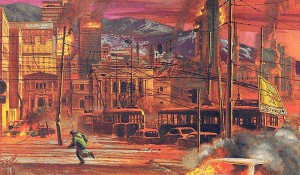 If you thought the Yugoslav tangle understand by reading this book, you can get dressed. I repeat, this is only an indirect testimony about an individual ordeal amid a collective tragedy which confuses goes way back.
If you thought the Yugoslav tangle understand by reading this book, you can get dressed. I repeat, this is only an indirect testimony about an individual ordeal amid a collective tragedy which confuses goes way back.
Moreover, misunderstanding is perhaps one of the largest confessions of this book and it’s not bad!
But if your desire to understand a little bit through the ninth sense you still titillates, then immerse yourself more in Stone Flower (ed. West Winds) Japanese Hisashi Sakaguchi. His goal, a story in the history of the Second World War to explain the history of the prefix before -ex- Yugoslavia. For this purpose, it is very efficient. The surprise will come also, a place as close to war be seen so far, through a language that never ceases to amaze with its flexibility: the manga.
Kubert is not interested in the sense of history in his comics. Completely facing his friendship Rustemagic, Kubert is committed to fade.
Conclusion: Rustemagic = screenwriter. Fax = synopsis.
We hardly know anything Kubert to feelings of receiving faxes; we will not know anything (in depth) of its impotence, it is far from all that, no fax connects us to do it. He describes, with its codes and drawing tics. Nothing else.
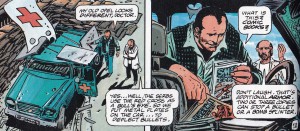 Old and famous designer adored by the fans, it is known among others for doing many comics recounting the woes of soldiers during World War II and Vietnam. There Kubert shows the disappointments of his friend Rustemagic, became (in pencil) soldier despite himself.
Old and famous designer adored by the fans, it is known among others for doing many comics recounting the woes of soldiers during World War II and Vietnam. There Kubert shows the disappointments of his friend Rustemagic, became (in pencil) soldier despite himself.
Kubert has documentation but uses little end. What makes that at times one feels in the Bronx (or Hells Kitchen …), rather than Sarajevo, Bernard Kouchner is portrayed as a big fat bald official.
These problems could be justified if the author had wanted to show that Sarajevo like his (and our) suburbs, and the lack of action by France is like this big guy.
But Kubert is realistic, he wants to see, to understand the visual reality. It appears this will end with the book records, showing his photographic documentation, but especially by displaying the setting boxes and pages, fax Rustemagic. Each chapter is more or less introduced by a fax. The actual setting is displayed, lays claim as such, through words (sore) (the) real Rustemagic!
“ The sensitivity are becoming melodramatic ”
But the problem, for the French edition faxes are translated. Normal, you tell me. Of course it also shows all the realism of this impasse will. Translation Translation. The Fax is a clue, a trace. Being translated it loses all essential analogy. We go from the iconism symbolism.
Spiegelman had had the sense to go directly to the symbolism using mouse and cat to describe Jews and Germans for example.
Kubert do not even think, at the edge of nonsense, Fax from Sarajevo is only a reification in terms of language, and perhaps, a media. The sensitivity are becoming melodramatic.
What is sorely lacking to Fax from Sarajevo, it is a reflection on language, but also self and language. Marcel Ophüls did, I had already said about Sarajevo-Tango, with the Vigil movie weapons which is emblematic in this respect, almost perfect, a masterpiece of obsessive and haunting.
Sarajevo Fax then proves to lack clarity because finally why the fax? Ripple and paper, a thin wire and written, is not it extraordinary?
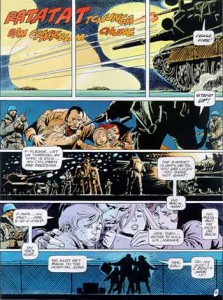 Kubert falls still far less than in the failure Hermann with Sarajevo-Tango, because one just wants to show an ordeal, a tragedy, when the other pique her little anger through a fictional album again, the symbolic as pub or a subtle propaganda (two totalitarian arts).
Kubert falls still far less than in the failure Hermann with Sarajevo-Tango, because one just wants to show an ordeal, a tragedy, when the other pique her little anger through a fictional album again, the symbolic as pub or a subtle propaganda (two totalitarian arts).
Hermann and Pratt and Dutch writer Lodewijk appear in the album. This reduction in the field around the comic is quite strange and causes a crossover stories that illuminate the authors and the media from another point of view. We understand better the origins of Sarajevo-Tango, for example.
But hey it’s not going away, it will especially one more question for a quiz Hermannophiles …
So Fax from Sarajevo would not read?
Paradoxically, though! This album is to read and reread as a failure of a style, a realist will, but also as a witness and proof of sincere friendship, strong, gross.
5. The Dark Horse Book of…. (The Collection)
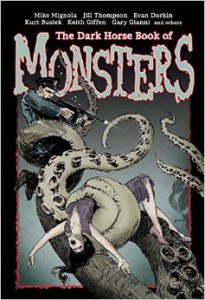
When Dark Horse launches in 2003 a thematic anthology of horror, strong rewarded with experience in both areas, they have no difficulty in aligning the summary of authors as diverse and experienced. And first of Mike Mignola, who offers his unique story of Hellboy year for the first volume, The Dark Horse Book of Hauntings. Initially planned three-part series (annual) finally have four volumes dedicated in turn to haunted houses (… Hauntings), witchcraft (The Dark Horse Book of Witchcraft), the undead (The Dark Horse Book of The Dead) and finally the monsters (The Dark Horse Book of Monsters).
The “horror” present in this anthology is a delightfully dated definition, Scott Allie, editor (also writer and participant) of the series, openly demanding of authors like Lovecraft, Howard or Burrough and magazines that have them welcomed and made famous, such as Weird Tales and Tales From The Crypt. At each point to include in a new volume (shown) of a type writer. [1]
It is not surprising to find that disproportionately affect contributions to the fantastic and strange, far from modern productions (especially film) full of hemoglobin and distraught emotions. The Dark Horse Book of … much to the pulps are mostly magazines, other (including Weird Tales) who popularized this “horror”, born of fantasy literature and Gothic novel in the early twentieth century. And even though its golden age is past, it still persists in the catalog Dark Horse, first in the productions of Mike Mignola with lovecraftiennes influences (among others) and claimed more than obvious.
Success of the genre
 Even with a common understanding of the “horror”, contributions are varied enough to not be repetitive. The actual diversity of participating authors is found in the first graphical approaches: the trait and black flat tints so recognizable Mignola alongside Jill Thompson splendid watercolors, drawing more “cartoon” of Langridge, pastels collages Scott Morse, the realism of Paul Chadwick, style “golden age” of Keith Gieffen or illustrations very 19th century engravings of Gary Gianni …
Even with a common understanding of the “horror”, contributions are varied enough to not be repetitive. The actual diversity of participating authors is found in the first graphical approaches: the trait and black flat tints so recognizable Mignola alongside Jill Thompson splendid watercolors, drawing more “cartoon” of Langridge, pastels collages Scott Morse, the realism of Paul Chadwick, style “golden age” of Keith Gieffen or illustrations very 19th century engravings of Gary Gianni …
And even if some contributions are proving fairly standard in their scenario and / or from their (s) author (s), they reserve real surprises and show an appreciable variety of treatments in narration, tone, rhythm and / or length. Thus we find stories to fall like This Small Favor Allie, Lee and Horton or The Hungry Ghosts Jones where exorcised and the undead respectively are not those believed.
“ Enjoyable dive in a great horror ”
Some writers take liberties with the theme as Uli Oesterle speaking more curse than ghost, Tony Millionaire by imaging the witches of Macbeth, evoking Busieck or more replacement pulps hero superhero by monsters. We even found the exotic (the medieval Japan Kago No Tori Jamie S. Rich and Guy Davis, a parallel society of domestic dogs Dorkin and Thompson …) or humor (Death Boy Fingerman and Langridge and his Hero features the Touch of Death …).
This quartet of anthologies thus proves a reading quite entertaining, and an enjoyable dive in a “great horror” delightfully quaint. It is also an opportunity to meet the authors of experienced productions, sometimes in original records from them. A real success of the genre so.
And as to readers who want more, they can then address the EC Comics archives (Weird Science, Tales From The Crypt …) that begin to appear in Gemstone Publishing.
4. Pop Gun Wars
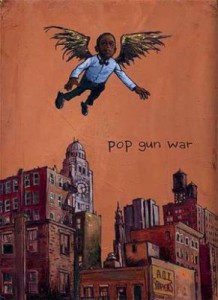
In a New York fantasized that condenses the memory of all megacities, an angel crashes into a building and the wings amputated with a chainsaw. Sinclair, a street kid, retrieves the wings and fixed to his back. Pursued by kids who persecute a bum, he gets stuck at the edge of a roof, he fell from the roof, no, it flies.
This is the starting point of a floating “démabulation”, the syncopated rhythms in the imaginary city. Koole we will cross it (a kind of disturbing Rasputin, a monk preacher to aggressive beard), Sunny (one dressed dwarf ringmaster, who will become a giant in the pages, how Lewis Carroll), Emily (rough kid and lucid, singer a rock band that bears his name), and two hooligans, a big cynical producer, a head that speaks in a travel bag and even a fish eye that makes a nod to Arizona Dream.
In short, the angels want to become humans, and humans would love to become anything else – but, as always, to become something else you must start by not being totally self, overflowed labels, and behold wakes up again this very old great vein as American literature grows to speak of social reality.
Table of poverty mingles with disturbing holiness (old mark, perhaps, of the fanatic and charitable integrity of early Quakers), moreover Addison Koole the tramp and the monk are the two faces of the same character clashed, to emphasize the relationship of the poor and perfect. This is just one example of the codes and symbols that fleetingly through the gallery of freaks, the sarabande opens in this New York fantastic dreamlike echoes (because the freak, Hieronymus Bosch to Todd Browning, one who is always opens the door to the other world, and from this point of view the dwarf-giant Pop Gun Wars is a perfect Monsieur Loyal, whose size changes reminiscent of Lewis Carroll).
 But, and history? What does that say? Loaded question: what is a round, a barrage, a series of pictures that are not arranged like the successive episodes of a particular history, tied to each other by the large solid chains of cause and effect, of action and reaction, but woven dozens of small symbolic son, echoes, colors, reminders, poems. Is it still a meaningless parable? Yes, in a way: we understand nothing, any strict interpretation is both possible consuming and ultimately futile. It must be carried away, let them make connections. As with Kerouac, perhaps, in the next “literature as mescaline,” but noting that the design allows even go right to the brain of the reader, because the design has with the dream a report that is not Semantic but mimetic: it is stronger, but it is less controllable.
But, and history? What does that say? Loaded question: what is a round, a barrage, a series of pictures that are not arranged like the successive episodes of a particular history, tied to each other by the large solid chains of cause and effect, of action and reaction, but woven dozens of small symbolic son, echoes, colors, reminders, poems. Is it still a meaningless parable? Yes, in a way: we understand nothing, any strict interpretation is both possible consuming and ultimately futile. It must be carried away, let them make connections. As with Kerouac, perhaps, in the next “literature as mescaline,” but noting that the design allows even go right to the brain of the reader, because the design has with the dream a report that is not Semantic but mimetic: it is stronger, but it is less controllable.
What common, I will be asked, between these two attributes? Let’s say the search for purity and gratuitousness. We note, without surprise, that Farel Dalrymple illustrated throughout Jude for the illustrated Bible, and these are beautiful holy pictures in simple and powerful architecture, full of angels, and chains, and sinners.
Fallen cities are like fallen angels
We now understand immediately why his New York is a dream voyage Babylon fallen angels, hysterical preachers and freaks mingled resentment and guilt. “As for the angels who did not keep their position known, but abandoned their dwelling, he keeps them for the judgment of the great day in everlasting chains under darkness. So Sodom and Gomorrah, and the cities who prostituted themselves in the same way and they went after a different flesh, lie example, suffering the vengeance of eternal fire “(Epistle of Jude, 6 & 7) .
Thus the fallen cities are like fallen angels. Dalrymple seeks just to save New York – one, and the city will not perish. It’s always the old drama of the angel who falls. Difficult with this angel, then with Sinclair finally allowed to grow his own wings, not to think of Wenders. At the turn of the 80s, all cities were Berlin.
The city cut off by a wall, it was a natural reflection of modern psychologies, all more or less fractured, all occupied rehashing their cracks. But that has changed, Berlin was rebuilt in large, well-dense modernity plates and cracks are looking elsewhere, in the Lebanese chaos Mazen Kerbaj, in the Japanese electric concrete Matsumoto Taiyô, or in the fantastic New York Farel Dalrymple. Cities are the successive faces of the world.
But the same question always comes up: is it when an artist is passive recorder of earthquakes of modern psyche? Is it enough to ask the world a pencil stethoscope to transmit its radio stations without ever diagnose anything? Okay, the material is there, “social surrealism” is not dead, it says something important – it recalls that poverty is not social, but it is human, and that poverty or deformities of men are only the privileged access to this more fundamental and universal condition, this misery of life that we all share (but a few sweets and a well-regulated PSP are usually quickly forget).
PS: on the other hand, if we can congratulate kymera its editorial choices rather daring, you can not also, alas, only note the massacre of manufacturing: the French edition is gray, pixelated, blankets original volumes are cropped and tranposées, beautiful original color to a bland and ugly gray-level, and the translation holds up, lettering is mechanical and not very well placed, thus wasting just about everything (note the passing that the website Farel Dalrymple himself is presented in a font specially created to fit the Pop Gun Wars Manual lettering in the Dark Horse version and it works fine).
